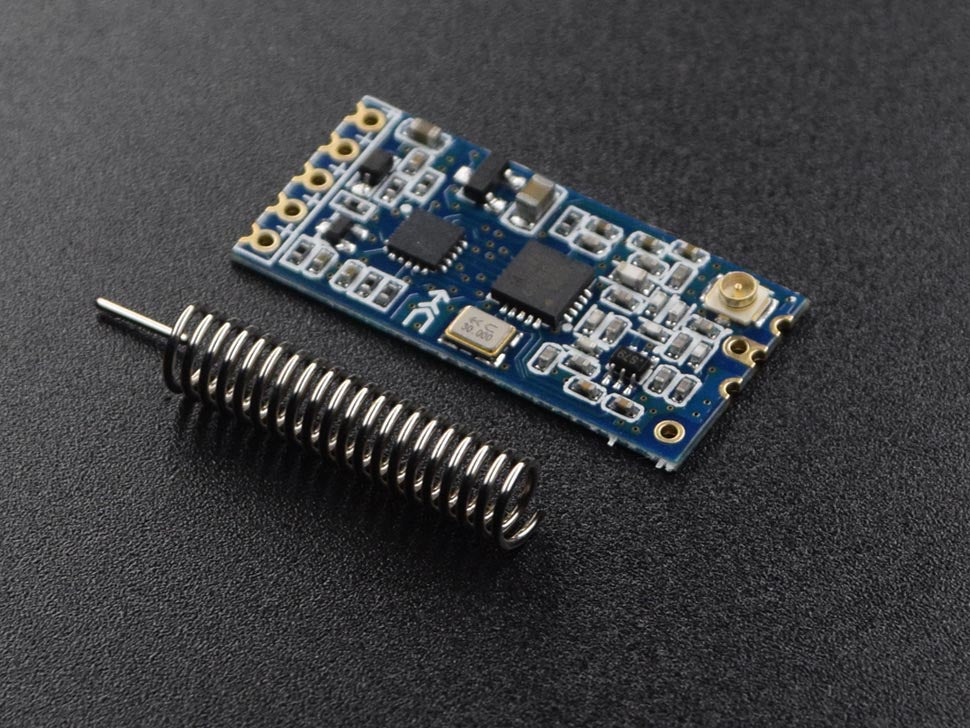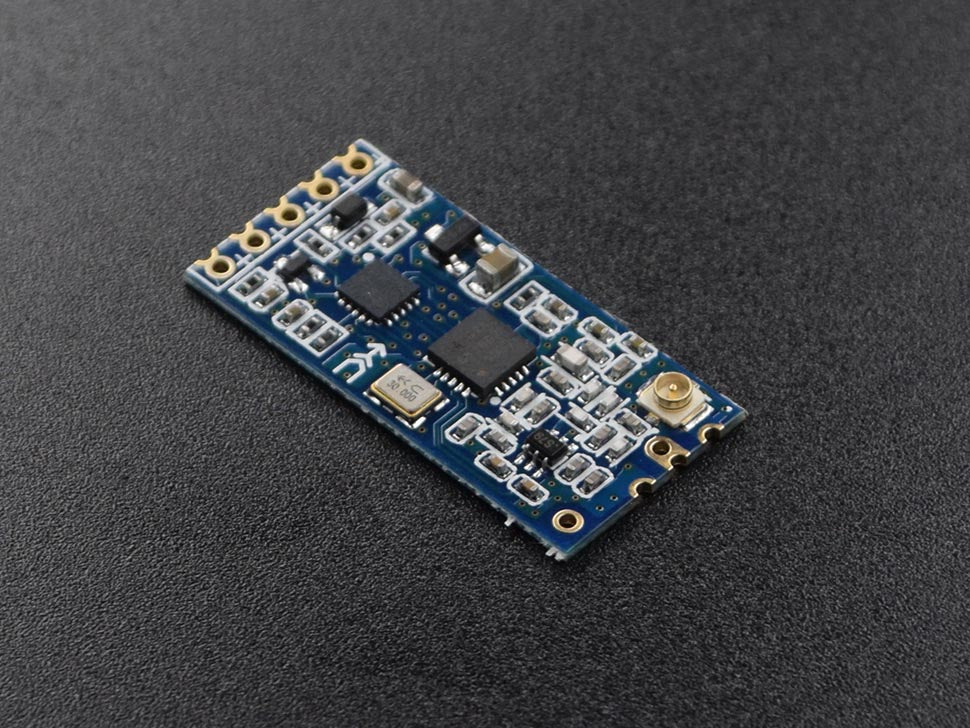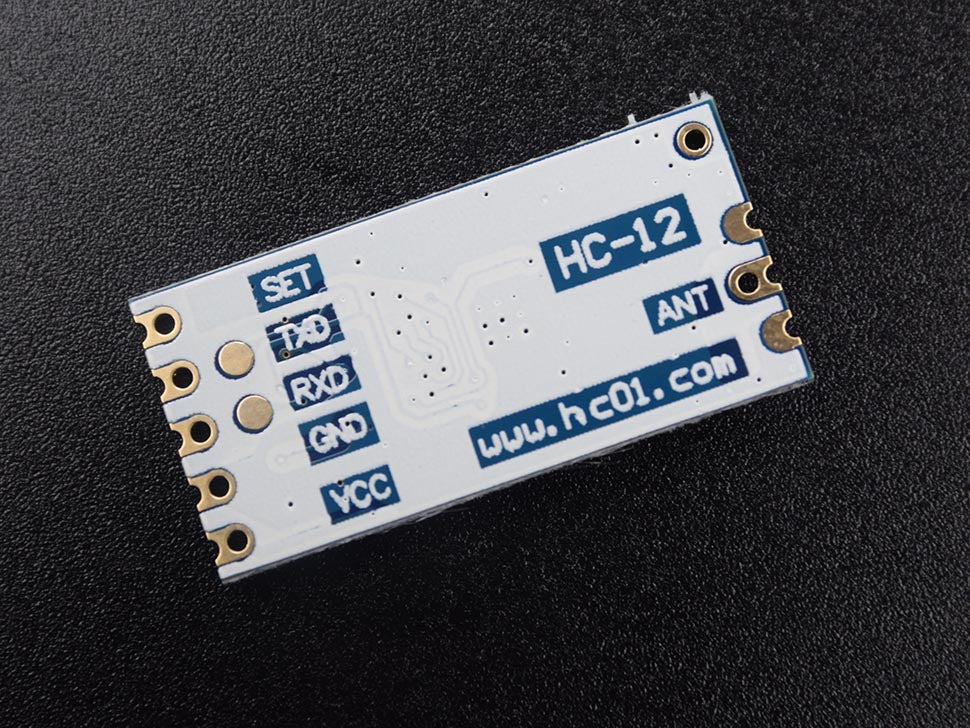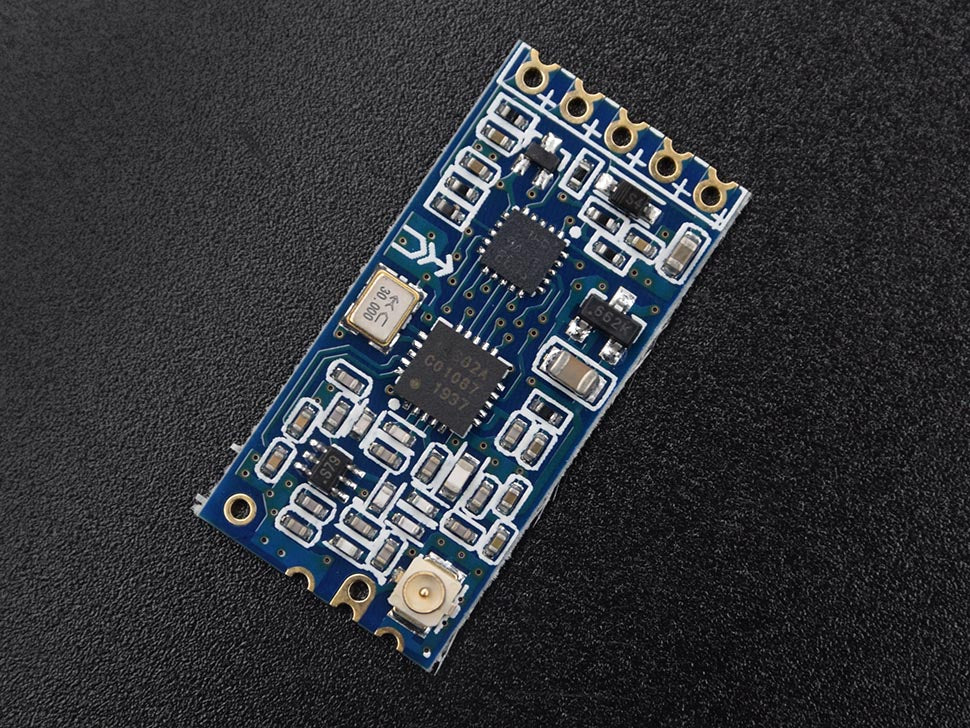RF Serial 433Mhz Module HC-12 (1000M)
RF Serial 433Mhz Module HC-12 (1000M) - Getting and sending data from/to your project won't be a hassle as this module could reach up to 1000m (1Km) in open space.
This module has a wireless working frequency of 443.4MHz to 473.0MHz with up to 100 communication channels. It also has a transmitting power of -.79mW(-1dB) with a maximum of 100mW(20dBm), with 3 working modes that adapt to different application situations. It has an operating temperature of -40°C to 85°C.
You could integrate this with your MCU by connecting it to the UART(RX/TX) of your MCU plus the power supply (VCC, GND).
This module is a substitute in projects deployed in the absence of wifi or in areas with a low cellular signal.
People Also Ask:
Q1: How is the HC-12 configured?
Only one wireless transmission module with a 433MHz frequency and an IPEX20279-001E-03 standard RF connector is included in the HC-12 module's standard configuration. The available accessories include a matching 433MHz-frequency-band Omni-directional rubber antenna with a BNC connector, an IPEX-to-BNC coaxial cable, and a spring antenna operating in the 433MHz band. Users could purchase them based on their needs.
Q2: What is a transceiver, secondly?
A transceiver is a transmitter and receiver packaged together. Although the phrase is often used to refer to wireless communications equipment, it can also refer to cable or optical fibre system transmitter/receiver devices.
This electrical device's primary capability is to transmit and receive various signals.
The trans-receiver is a unit of the network interface card in local area networks. It has the ability to both transmit and receive electrical impulses travelling over the network line. Some networks, however, demand an external transceiver.
Smartphones and cordless phones are examples of wireless communication devices where the transceiver is integrated into the mobile device.
Q3: What distinguishes a transmitter from a transceiver?
An independent electronic device known as a transmitter produces radio frequency (RF) currents or radio waves. In communication systems, these waves are utilized to transmit data such as audio, video, etc. On the other hand, a transceiver may transmit and receive digital signals.
Q4: How does a radio transceiver work?
The transceiver can operate in half-duplex or full-duplex mode during radio communications: half-duplex transceivers. It can only do one of these two things at once: transmit or receive. This is so because an electrical switch is used to link the transponder to the same antenna. Ham radios, walkie-talkies, and other single-frequency Full-duplex transceivers use this mode. The radio receiver and transmitter can operate simultaneously. Various radio frequencies are used for transmission and reception. Both mobile and portable two-way radios use this mode.
Q5: What role do transceivers play in a wireless communication network?
A transceiver's function is determined by its kind. In wireless communication systems, transceivers come in four different varieties:
For analog (over the wire) and digital transmission, baseband modems and routers use RF transceivers. In satellite communications networks, they are also utilized.
To transform electrical signals into light signals, optical transceivers make use of fiber optic transceiver technology. They are fast transmission tools.
In Ethernet circuits, electrical devices are connected by means of transceivers. They go by the name media access units as well.
For faster Wi-Fi transmission, wireless transceivers integrate RF transponder and Ethernet technology.
RF Serial 433Mhz Module HC-12 (1000M)
RF Serial 433Mhz Module HC-12 (1000M)
Out of stock
Product Code
SKU:AB443
Couldn't load pickup availability








